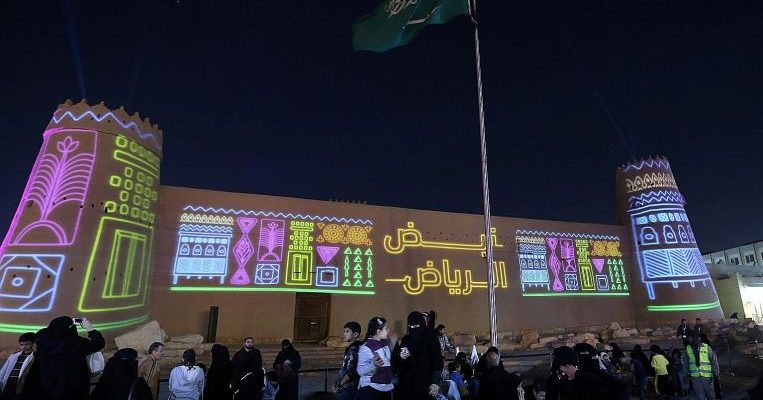
RIYADH • As couples on their way to a lavish dinner strolled past palm trees hung with chandeliers in a historic quarter of Riyadh, the recent belt-tightening downturn in Saudi Arabia’s economy seemed a world away.
Inside a replica of Carbone, a Michelin-starred Italian restaurant in New York, diners ordered wagyu beef steaks for 500 riyals (S$180), just over the minimum spend required to secure a reservation weeks in advance.
The evening towards the scheduled end of the “Riyadh Season” – a government-sponsored flurry of food offerings, concerts, sporting events and carnivals – encapsulated much of what Crown Prince Mohammed bin Salman wants his kingdom to embrace.
Since rising to become the kingdom’s de facto leader, he has sought to soften its reputation as an ultra-conservative Islamic state propped up by oil. He has rolled out historic decisions, including easing restrictions on live music, cinema and dress, and opening the country to foreign tourists.
But the extravaganza, and the debate it triggered, highlighted twin challenges for the authorities as they look to promote broad acceptance of the changes: ensuring the less well-off are not alienated by lifestyle choices they cannot afford, and making them richer so that their spending can fuel a nascent economic recovery.
“There was a rush towards entertainment in a way that distanced many people – the have-nots,” said Dr Saad Albazei, a literature professor and former member of the consultative Shura council. He supports the transformation plan but worries that the high prices of some of the events could exclude people.
Consumer spending is recovering after faltering as the slump in oil prices from 2014 forced the government to trim generous subsidies, slowed the economy and made Saudis watch their wallets.
Recently, officials said they are pulling back on government spending to let private investment take the lead.
Riyadh Season is part of the pitch.
It generated a billion riyals in revenue over two months from its mid-October start, attracting 10 million visitors, though it has not made a profit for the government.
“If we got anything out of Riyadh Season, it’s that demand is there, social acceptance is there,” said Mr Faisal Bafarat, chief executive of the General Entertainment Authority. “Businessmen are coming and saying we want to invest.”
Still, debate about prices has persisted, with Dr Albazei surprised when he raised the issue on Twitter and hundreds of people replied to his post. The fact that Saudis were openly discussing the issue after a crackdown on domestic dissent is a sign it struck a chord.
Inequality is nothing new in Saudi Arabia, and many Saudis view the contrast between legions of royal princes and the beggars at street intersections as a fact of life.
Median family monthly income was 11,494 riyals in 2018, about S$50,000 a year.
Yet before Prince Mohammed began his shake-up, there were few ways for the rich to spend on leisure in public sight.
Now, as the government sponsors rave-like concerts alongside more sedate Arabic theatre, spending that used to happen abroad is coming home.
BLOOMBERG
